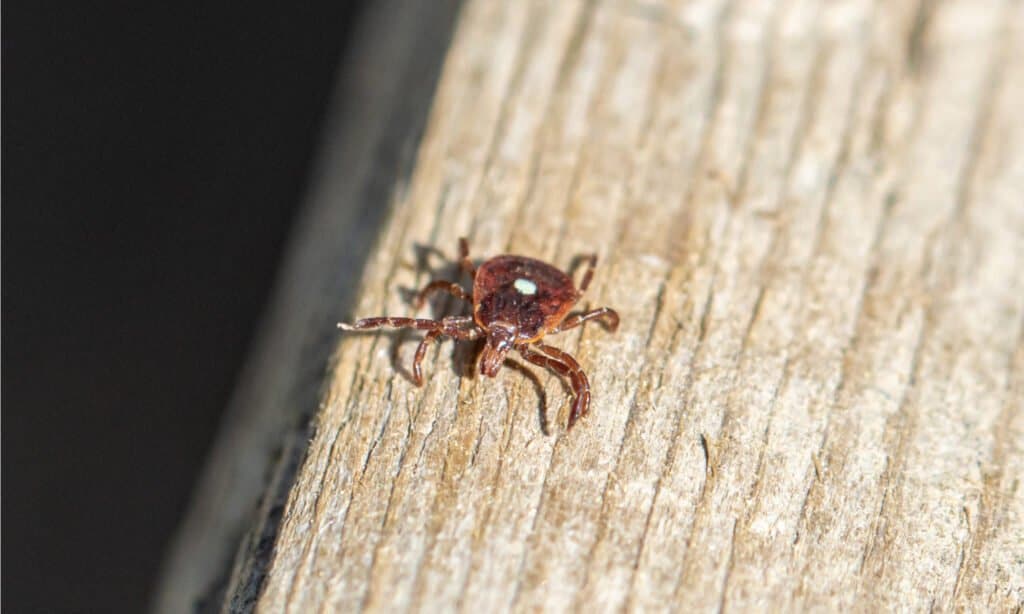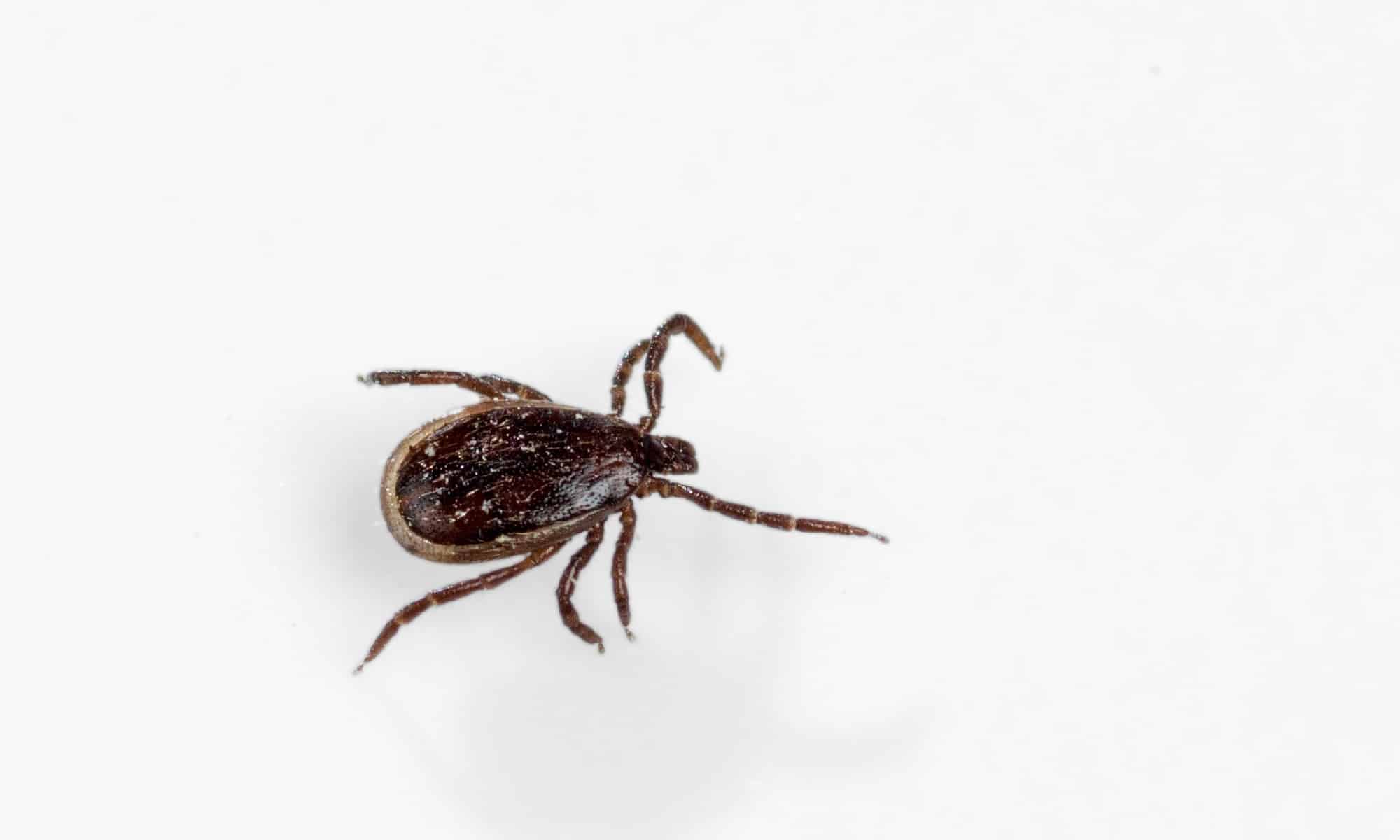What is the first thing that comes to mind when you see a tick super up close? Or, what do you picture when you think of a tick? Well, an eight-legged creature will immediately catch your eye if you ever get a chance to see one close-up. The problem is that most people aren’t interested in looking at a tick since they consider them a pretty big pest. Because of this, ticks remain a mystery. After all, the creepy crawlies that live on our planet are not all the same. There are some bugs that are insects, and there are some that are not. Generally, insects have six legs and wings and are small.
So is a tick considered an insect or is it classified as something else entirely? Discover what ticks are and what makes them unique in the animal kingdom. We’ll discuss how ticks differ from spiders, how they are classified, and how to prevent being bitten by a tick.
Are Ticks Arachnids or Insects?

The common misconception is that ticks are insects, but they are actually arachnids.
©Maria T Hoffman/Shutterstock.com
What exactly are ticks? Are ticks classified as arachnids or insects? A tick is not an insect, but an arachnid belonging to the same classification as mites. Similar to mites, ticks have four life stages. These stages are broken up into egg, larva, nymph, and adult. Ticks, however, have a much larger size than mites. During their larval stage, tick larvae have three pairs of legs. As for nymphs and adults, they have four pairs of legs. There are two parts to a tick’s body: the idiosoma, which contains the organs and legs, and the capitulum. Ticks feed almost exclusively on blood, and female ticks need blood to produce eggs.
Ticks are classified as either soft or hard. A hard tick gets its name from the protective structure found on the backside of the idiosoma. This shell-like structure is referred to as the scutum. For immature stages and adult males, the scutum covers the entire back, while for females, it only covers the front portion. A soft tick does not have a scutum. Soft ticks have mouthparts that are partially or completely hidden under their bodies. Hard ticks can be seen with their mouthparts projecting forward.
In ticks, there is an organ that serves as a sensor known as the “Haller’s organ.” It senses humidity, odor, and heat. This is how they find the food sources they need to survive. As soon as they detect an animal or person nearby, they hop on to the host and attach themselves to it.
Are Ticks Related To Spiders?
There is a stronger connection between ticks and spiders than they have with insects. Together with mites and scorpions, they belong to the arachnid family. Spiders and adult ticks are both eight-legged creatures without antennae or wings. One of the biggest questions that many have is if it possible for ticks to spin webs. In contrast to spiders, ticks hunt opportunistically. This means that they wait until their prey wanders close enough for them to jump onto them and begin feasting.
How Do Ticks Differ From Spiders?

Spiders have segmented bodies, whereas ticks do not.
©Tobias Hauke/Shutterstock.com
While spiders and ticks are both arachnids, ticks are not spiders. Instead, a tick is a type of mite. These tiny pests are mostly parasitic in nature and bite and transmit disease through the bites they cause. A spider’s body is also different from a tick’s body. As arthropods, they both have external skeletons and joints on their legs. However, spiders have segmented bodies whereas ticks do not. Spiders also have separate cephalothoraxes and abdomens. As ticks have small, flat, unsegmented bodies, they are able to easily attach themselves to the body of their hosts.
There is also a great deal of variation in their diets as well. Insects are the most common food for spiders, but others will eat flowers, pollens, seeds, leaves, silk, and dead arthropods. After shedding their exoskeletons, some even eat them! Some spider species can even consume birds, lizards, and fish, depending on their size. However, ticks feed on the blood of mammals like humans, wild animals, and pets. The parasites consume blood by attaching to a host with their mouthparts.
Tick Bites vs. Spider Bites
There are very few infectious diseases transmitted by spider bites, unlike those caused by ticks. It is important to remember that there are exceptions to this, such as black widow and brown recluse spider bites. Venom from these spiders can cause pain, soreness, rashes, and neurological damage.
On the other hand, ticks can transmit a wide range of diseases. In New York State alone, it is estimated that more than half of the ticks in Long Island carry Lyme disease, which is a serious illness. Humans contract this bacterial disease through the bite of black-legged ticks, causing flu-like symptoms and a distinctive bullseye rash. However, this isn’t the only illness that you can contract from a tick bite. There are many other diseases such as Rocky Mountain spotted fever and babesiosis. All of these typically have flu-like symptoms associated with them.
Where To Find Ticks

Humid areas with densely wooded cover, forests, and grasslands are ideal habitats for ticks.
©Afanasiev Andrii/Shutterstock.com
The majority of ticks are found in wooded or densely vegetated areas. Woodlands are excellent places to find tasty hosts for ticks since they drink blood. Globally, ticks can be found in many different species, but some are more prevalent than others. In America, the brown dog tick can be found throughout the country, whereas other species are confined to certain areas.
Climates that are warm and humid are usually the ideal habitat for ticks. These climates are conducive to the survival of many arachnids, in particular, because of two factors. In warm environments, they reproduce and develop faster, just like other arachnid species. The second reason is that ticks absorb moisture from the air rather than drinking it. During times of high humidity, ticks have access to enough water to sustain themselves.
How to Prevent and Treat Tick Bites
There are several precautions that can be taken to reduce the chances of a tick spreading an infection. If you are hiking and exploring around, avoid areas where there are trees and bushy vegetation, high grass, or a lot of leaves because ticks will be more likely to be found there. It is possible to protect yourself from ticks by wearing the right clothing. Whenever possible, wear long-sleeved tops and tuck pants legs into socks and boots to prevent ticks from easily accessing legs.
Choosing a repellent that is suitable for both your skin and your clothing is also an option. There are some of these products that offer protection for several hours when they contain 20-30% DEET in them. After spending time outside in an area where ticks may be present, it’s a good idea to inspect your entire body for ticks. It is difficult to find them if you don’t look for them, especially since they are hard to notice. Prevention of infection begins with the removal of ticks promptly, as we have already mentioned. Tweezers can be used to remove ticks, but specialized tick removal devices are available as well.
Take the tweezers and grasp the tick as close as possible to the skin’s surface. As you pull upwards, be sure to maintain an even, steady pressure throughout. It is possible that you will end up with some of the tick’s mouth parts embedded in your skin if you twist and jerk it. It may be necessary for you to use tweezers to carefully remove any remaining parts if this happens. You should then clean the affected area and dispose of the tick appropriately in alcohol or in the trash after it has been removed.
Thank you for reading! Have some feedback for us? Contact the AZ Animals editorial team.








